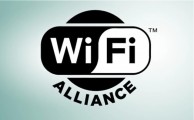Wi-Fi Alliance Plans to Introduce Wi-Fi 6 Certification in Fall
September 3, 2019
At CES 2019, even though Wi-Fi 6 had yet to launch, manufacturers including Asus, Dell and HP listed support for the next-generation connectivity, in order to future-proof their laptops and routers. The same approach was taken by Samsung, which debuted its Galaxy S10 in February, also with Wi-Fi 6 support. Wi-Fi 6 will offer incrementally improved speed, but its superpower is to handle simultaneous streaming to multiple devices. It’s also the first major upgrade of dual-band support since Wi-Fi 4 (or 802.11n) rolled out in 2009.
Wired reports that, “Wi-Fi 4 operates on both 2.4-GHz and 5-GHz bands … [whereas] Wi-Fi 5, née 802.11ac, only uses bands in the 5-GHz spectrum … [and] Wi-Fi 6, or 802.11ax, is supposed to optimize for the transmission frequencies of both 2.4-GHz and 5-GHz bands.”

Wi-Fi 6’s highlights are “multi-user, multiple-input, multiple-output technology (MU-MIMO)” and Orthogonal Frequency Division Multiple Access (OFDMA), which “enables more devices to simultaneously operate on the same Wi-Fi channel … [and] improves the efficiency, latency times, and data throughput of your wireless network.”
Wi-Fi Alliance president/chief executive Edgar Figueroa reported that Wi-Fi 6 “could mean a throughput of 9 to 10 gigabits per second in optimal conditions … [and] that, thanks to computational intelligence, devices used at the edge of Wi-Fi range (about a football field’s length away) will still have decent Wi-Fi connectivity.” Even with 12 gadgets on the same network, Wi-Fi 6 will also use “scheduling” to maintain a strong connection for all of them.
Every “piece of tech” that claims to support Wi-Fi 6 will have to support the new security standard WPA3 to achieve certification. With regard to backward compatibility, “even if your older device isn’t Wi-Fi 6 certified, it will still be able to pull a signal from Wi-Fi 6 routers,” although it might not be an optimal experience.
The Wi-Fi Alliance’s certification program is expected to launch in early fall, but “we probably won’t see manufacturers fully embrace the available chipsets until next year.” We’ll still have to wait for both wireless routers and “end user” devices to use Wi-Fi 6 to experience the upgrade’s benefits, including the Samsung Galaxy S10, Asus RT-AX88U Dual-Band Wi-Fi 6 Router, Netgear’s Nighthawk AX12 12-Stream Wi-Fi 6 Router, HP’s EliteBook x360 830 G6, and Dell’s newest Latitude laptops (7000, 5000, and 3000 series), among other devices.
Wi-Fi 6 support comes at a cost; devices supporting it are already a premium price. But Wi-Fi 6, Wired notes, is “one step closer to the gadget-filled future we were promised.”

No Comments Yet
You can be the first to comment!
Sorry, comments for this entry are closed at this time.